
- Safety Officer
- Safety Quiz
- Interview Q/A
- Online Exam
- Download PPT
- Get Certificate Online
- HSE Web Story
- NEBOSH IDIP
- Fire Engineering
- Basic Safety
- Construction Safety
- Workplace Safety
- Fire Safety
- Crane Safety
- Work At Height
- Excavation Safety
- Electrical Safety
- Confined Space
- Noise Safety
- Vibration Safety
- Scaffolding
- Radiography
- HSE Calculations & Formulas
- Safety Slogan
- Tool Box Talk
- HSE Documentation
- HSE Training

Risk Assessment
- Safety Audit
- Accident Investigation
- Privacy Policy
- Terms and Conditions

Work At Height | Hazards and Safety Precautions | Download PPT
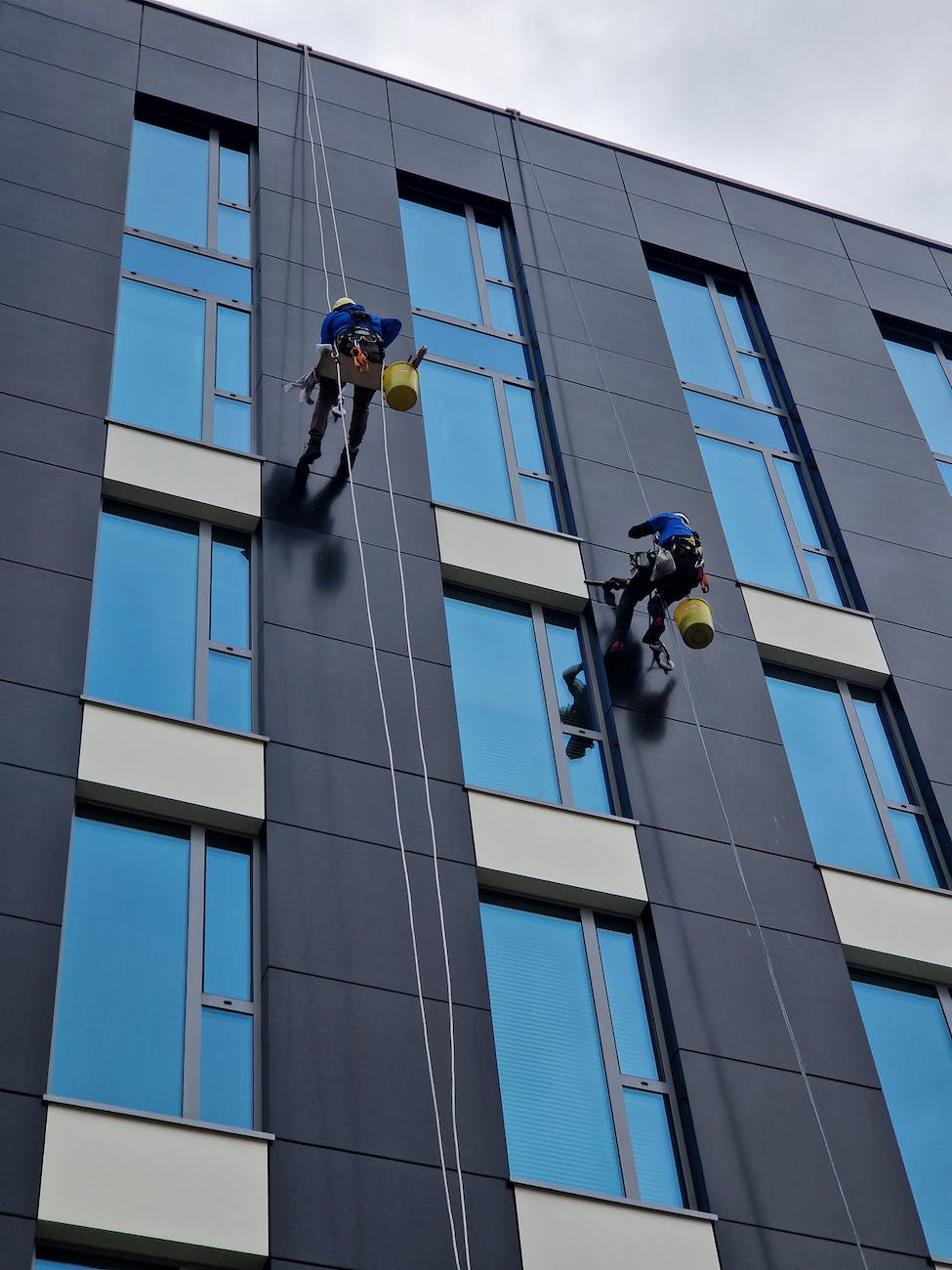
Table of Contents
Work At Height : Work at height is a common aspect of many industries, from construction and maintenance to window cleaning and tree trimming. While it’s an integral part of various job roles, it also presents significant hazards. This article will explore the hazards associated with working at height and provide essential safety precautions to ensure the well-being of workers. Additionally, we’ll offer you the opportunity to download a comprehensive PowerPoint presentation (PPT) to further educate yourself or your team on this critical subject.
Understanding Work at Height
Before we delve into the hazards and safety measures, let’s clarify what ‘work at height’ means. Working at height refers to any job that takes place at a location where someone could fall from it, causing injury. This includes activities carried out on ladders, scaffolds, roofs, and even elevated platforms.
Common Work at Height Hazards
Falling from heights is one of the most common accidents in the workplace. It can result from slips, trips, or loss of balance, and the consequences can be severe, even fatal. It’s crucial to understand the factors that contribute to falls and how to prevent them.
Equipment Failure
The equipment used for work at height, such as scaffolding, ladders, or safety harnesses, can fail. This may happen due to wear and tear, improper maintenance, or overloading. Regular inspections and proper use of equipment are vital to prevent accidents.
Weather Conditions
Weather can greatly affect the safety of working at heights. Strong winds, rain, or icy conditions can increase the risk of accidents. Understanding how weather can impact safety and taking necessary precautions is essential.
Importance of Safety Precautions
Safety precautions are paramount in preventing work-at-height accidents. They not only save lives but also ensure the efficient and smooth execution of tasks. Here are key safety measures to consider:
Safety Equipment and Gear
Safety harnesses are a lifeline for workers at height. They distribute force across the body, reducing the risk of injury during falls. Proper fitting and maintenance are essential for harnesses to work effectively.
Guardrails provide a physical barrier to prevent workers from accidentally stepping or falling off edges. They are a simple yet effective safety measure.
Helmets protect workers from head injuries caused by falling objects. They should be worn at all times when there is a risk of objects falling from above.
Proper Training
Proper training is the cornerstone of work-at-height safety. All workers must be trained in the safe use of equipment, hazard recognition, and emergency procedures.
Safety Procedures and Protocols
Before any work at height begins, a comprehensive risk assessment should be conducted. This identifies potential hazards and allows for the development of safe working procedures.
Emergency Response Plans
In the event of an accident, an emergency response plan is critical. This should include first aid procedures and the process for seeking immediate medical attention.
Regulatory Compliance
To maintain a safe working environment, it is essential to adhere to local safety regulations and standards. Non-compliance can lead to legal consequences and, more importantly, jeopardize the safety of workers.
Downloadable PPT for Work at Height Safety
To aid in educating your team or colleagues on work-at-height safety, we offer a downloadable PowerPoint presentation (PPT). This presentation covers all the essential aspects of working at height, including hazards, safety precautions, and emergency procedures.
Work at height is an integral part of many industries, but it comes with inherent hazards. By understanding these hazards and implementing safety precautions, we can ensure that work at height is carried out safely and efficiently. Remember that safety should always be the top priority in any work environment.
Frequently Asked Questions (FAQs)
1. Why is working at height so dangerous? Working at height is dangerous because it involves the risk of falling, which can lead to serious injuries or even death. This risk necessitates strict safety precautions.
2. What safety equipment is essential for working at height? Essential safety equipment includes harnesses, guardrails, helmets, and safety nets, depending on the specific job and conditions.
3. How can I ensure my team is properly trained for work at height? Ensure that your team receives comprehensive training from experienced instructors and follows all recommended safety guidelines.
4. What are the legal requirements for working at height safety? Legal requirements vary by location, but they typically involve adherence to safety regulations, equipment inspections, and risk assessments.
5. Where can I find more resources on work-at-height safety? You can download our comprehensive PPT presentation for a detailed overview of work-at-height safety. Additionally, consult local safety authorities and organizations for resources specific to your area.
Share this:
- Click to share on Twitter (Opens in new window)
- Click to share on Facebook (Opens in new window)
- Click to share on Telegram (Opens in new window)
- Click to share on WhatsApp (Opens in new window)
- Click to share on LinkedIn (Opens in new window)
RELATED ARTICLES MORE FROM AUTHOR
Confined space entry procedure | download ppt, work permit receiver in saudi aramco | download ppt, management information system (mis) | download ppt.
Excellent and informative
Thanks for the lecture for reminding me again and elaborating my knowledge when you mentioned that weather can pose a potential hazards while working at heights. Thanks for the precautionary measure you listed. Best regards
This filled appropriately knowledge gap. Thanks great team.
LEAVE A REPLY Cancel reply
Save my name, email, and website in this browser for the next time I comment.
Notify me of follow-up comments by email.
Notify me of new posts by email.
Popular Posts
Top 15 best safety slogan in hindi, hse engineer job vacancy : urgent requirement, top 25 best hindi safety slogan in 2024, easy nebosh igc exam questions and answers, 25 safety officer interview questions (with sample answers), 10 essential safety officer tips every workplace needs to know, industrial safety, safety officer & safety engineer, work at height | hazards | control measures, very important slip trip and fall hazards, personal fall arrest system, latest post, 3 golden rules of safety, golden safety rules, 6 golden rules of electrical safety, 20 electrical safety rules, 10 electrical safety rules, (nebosh) the national examination board in occupational safety and health, 03 safety officer jobs vacancy in saudi arabia: oil and gas..., 05 hse officers urgently required in saudi arabia, 08 hse engineer jobs in uae: oil & gas project, 1 minute safety topics.
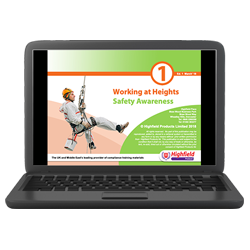
Working at Heights Safety Awareness Training Presentation
Health and safety.
- Ensure your learners know how to work safely at heights
- Ideal for training new staff and as a refresher
- The perfect resource to assist classroom delivery
- Excellent value for money
- Product Details
Injuries caused from working at height make up a significant percentage of workplace injuries and are the largest cause of workplace fatalities across the world. This engaging and interactive training presentation covers the basic principles to work safely and effectively at height. Ideal for educating learners who work within the construction industry and are studying towards the Highfield Level 1 International Award in Work at Height....
You may also like

TRAINING RESOURCES
Health and Safety for Supervisors (Level 3) Training Presentation
£385.25 excl. VAT
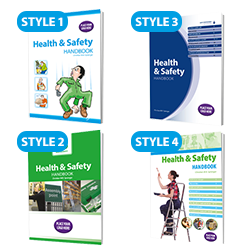
Personalised Health and Safety Handbook
£1.65 excl. VAT

Health and Safety for Supervisors and Managers
£16.50 excl. VAT
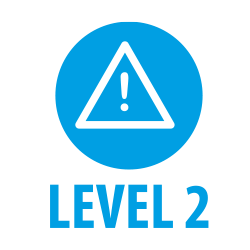
QUALIFICATIONS
Highfield Level 2 Award in Health and Safety within the Workplace (RQF)
£8.60 excl. VAT
Academia.edu no longer supports Internet Explorer.
To browse Academia.edu and the wider internet faster and more securely, please take a few seconds to upgrade your browser .
Enter the email address you signed up with and we'll email you a reset link.
- We're Hiring!
- Help Center

Working at heights - training powerpoint

Related Papers
Journal of Safety Research
Michael McCann
Justin Young
Academic Emergency Medicine
Melanie Arthur
Giang Nguyen Hoang Anh
… and Practice for Fall Injury Control …
MATEC Web of Conferences
Georgeta BUICA
The research study aims to implement the general principles for the prevention of professional risks at employers’ level in relation to low-mobility workers in order to ensure an adequate level of safety and to ensure protection measures in support of social integration and inclusion. In order to prevent occupational accidents and occupational diseases at work, it is necessary to ensure the control of risks in order to improve the working conditions and to ensure the safety and health at work for the workers perform work at heights in the sectors of activity of the national economy with a high accident rate, by using compliant and safety work equipment. Managing professional risks of work equipment used for performing work at heights requires designers and manufacturers to ensure the conditions for the placing on the market of safety products with an adequate level of safety under the intended use conditions. To that end, the research study identifies the specific prevention tools n...
American Journal of Nursing
The work in electrical installations requires some activities to be carried out on heights, and must be carried out in a safe manner and with appropriate ergonomic conditions, by choosing specific work equipment and means of protection, to ensure optimal working conditions in safety parameters. The use of electrical insulating work equipment for temporary work on heights it is a mandatory technical and safety measure to carry out the specific activities in electrical installations, as well as to ensure the protection against electrical risks and to prevent falling from heights. The research study aimed at identifying the specific professional risks and the assessment of the technical and safety requirements for work equipment intended to be used on heights - ladders made of electrical insulating material sections. Effective management of the safety management of this work equipment is necessary to ensure a high level of safety for workers and to establish the necessary preventive me...
Darshi De Saram
ONG Kong construction industry has a very high accident record rate. Highest numbers of accidents have occurred due to falling from height. This paper presents a research that was carried out through case studies on 14 sites where personnel were working at a height. The study indicates that 65% of the respondents did not have a safety management system in force while the rest had a reasonably sound system and complied with it. Further, a detailed study was carried out on the circumstances that led to a major accident causing many fatalities. Results point to the fact that safety management systems implemented by most construction companies lack effectiveness. Poor motivation and lack of commitment to eliminate or reduce risks and achieve progressive improvement of safety standards for all risk areas was observed. Findings suggest that financial pressure may have made the companies objectives different from those that are safety related.
RELATED PAPERS
Life Sciences
elena kalinina
OTT OTTO ROOTS
Journal of Allergy and Clinical Immunology
Flavio Salazar-Onfray
Middle East Journal of Agriculture Research
Dr. Noura M . Taha
Valeria Tonini
Journal of Payavard Salamat
mahsa akbari
Mike Lipkin
Aesthetic plastic surgery
Dmitry Zavlin
国際協力論集 25(1)
International Journal of Scientific Reports
Abubakar musa
Mundos do Trabalho
Maria Celma Borges
IEEE Transactions on Plasma Science
kishan kumar
International Journal of English Language Studies
Mohamed Benhima
COMSEP: Jurnal Pengabdian Kepada Masyarakat
Mulyadin Mulyadin
Jörg Wollenberg
Trends in Mathematics
Carlos Andres Peña Galindo
Journal of Food Science and Technology
Mustafa Bayram
Jose' Kenny
Toolit Ambrose Dbins , Francis Akena Adyanga
MERYEM MENEKŞE
Yüzüncü yıl üniversitesi fen bilimleri enstitüsü dergisi
Şilan Baturay
Journal of Microbiological Methods
Hans-Jürg Monstein
Electric Power Systems Research
Khải Nguyễn
Jack Douglas
Journal of Animal Science
David Lalman
- We're Hiring!
- Help Center
- Find new research papers in:
- Health Sciences
- Earth Sciences
- Cognitive Science
- Mathematics
- Computer Science
- Academia ©2024
Sign up to our free trial to preview our library and read up to 3 articles
Working at height: staff briefing, make sure your staff feel confident that they know how to work safely at height. save time with our 30-minute presentation and downloadable resources so you can deliver an interactive and meaningful session., 30-minute briefing: working at height .
You'll cover:
- What we mean by 'working at height'
- How to work safely at height
- What equipment you might use
- How to use a ladder safely
- How to store equipment safely
Note: select 'enable editing' to view the below downloads if the formatting is affected by your specific version of Word or PowerPoint.
Presentation
Facilitator notes.
Use these facilitator notes as your step-by-step guide to preparing for and delivering this briefing.
Staff handouts
You can download a handout of the briefing's key points, to distribute to staff.
Staff assessment
This presentation comes with a quick assessment to check understanding at the end of the briefing, and an answer sheet for marking.
Download and edit
This article is only available for members

Want to continue reading?
Start your free trial today to browse The Key Leaders and unlock 3 articles.
Already a member? Log in

Most popular
- Risk assessment: staff briefing
- Health and safety for teachers and TAs: staff briefing
- Basic fire safety: staff briefing
- Medicines management: staff briefing
Also in " Health and safety training "
- Control of substances hazardous to health (COSHH): staff briefing
- Manual handling: staff briefing
Start getting our trusted advice
- Thousands of up-to-the-minute articles
- Hundreds of templates, letters and proformas
- Lawyer-approved model policies

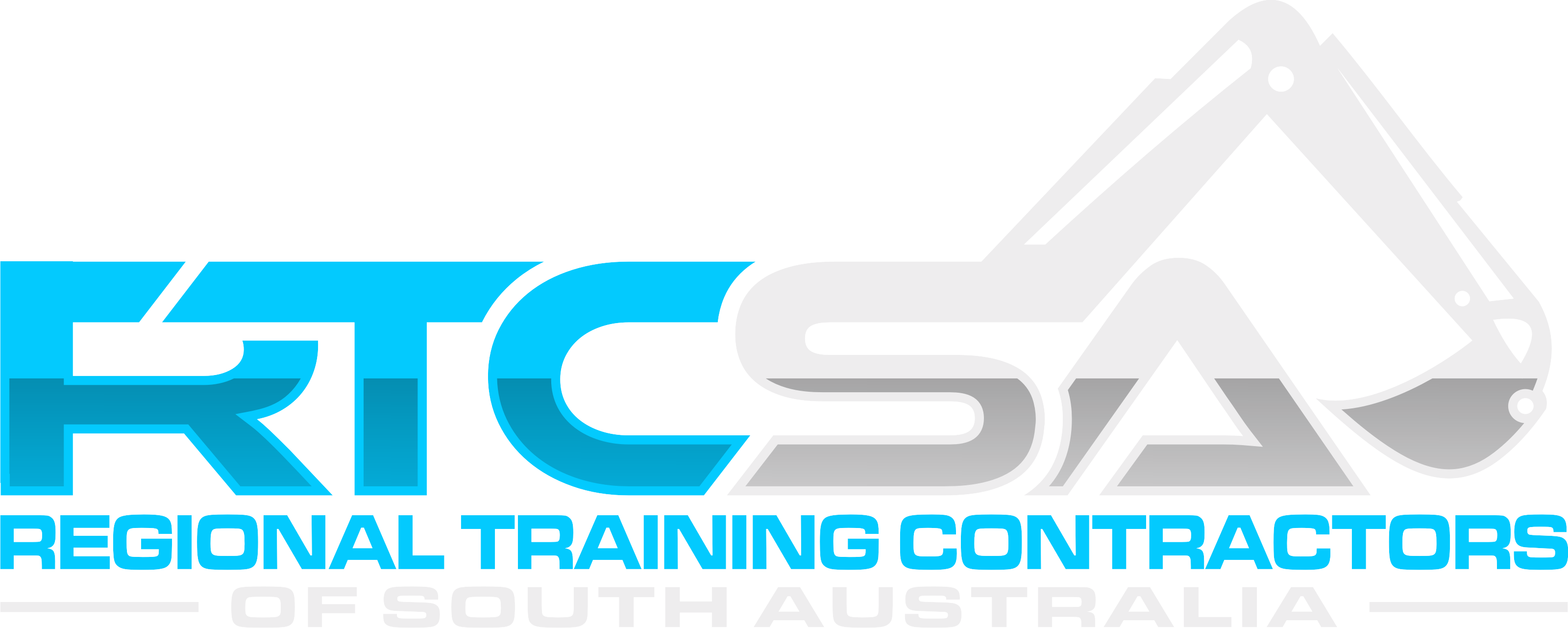
Working at Heights
Rtcsa delivers nationally accredited training on behalf of aps training group..
APS Training Group #31588 is the registered training organisation that issues certification upon successful completion of this accredited course.

RIIWHS204E – Work Safely at Heights
This nationally accredited course caters for all persons that are required to work at heights. This includes any situation where a worker is at a height where there is a potential to fall and cause injury, fall from one level to another, or is working in elevated work platforms (EWP), working from scaffold, or are required to be compliant with local legislation/Australian Standard AS/NZS: 1891.
Licensing, legislative, regulatory and certification requirements that apply to this unit can vary between states, territories, and industry sectors.
This course covers all relevant information about health and safety standards, general working at heights applications, permits, permit process, hazards and associated risks, preparation for heights work, roles and responsibilities, PPE, ladders, scaffolds, equipment inspection and use and more. Training consists of theory presentation, assessment and simulated practical scenarios.
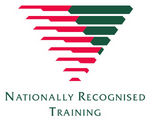
Standard industry practice is that refresher training should be conducted every 2 years. This does vary from company to company though. Always check with your employer.
COURSE BROCHURE
APS TRAINING HANDBOOK
- COURSE CONTENT
- REQUIREMENTS
- DELIVERY & LOCATION
- CERTIFICATION
Assessment is based on theory questions as well as simulated practical scenarios and includes:
- Identify work requirements
- Identify work procedures & instructions
- Access & install equipment
- Perform work at heights
- Clean up work area.
- Participants must be 18 years of age or older and able to speak, read and write basic English.
- Photographic identification must be provided on the day. ID must contain photo, signature, and date of birth.
- Participants must have a unique student identifier (USI) to obtain their nationally accredited certificate. To apply for a USI, or for further information, please visit: usi.gov.au
- PPE: Participants are required to wear personal protective equipment whilst attending this course, including hi-vis shirt or vest; long trousers; safety boots; safety glasses.
- Participants must be confident to work at heights.
This course will be delivered on behalf of APS Training Group by Regional Training Contractors of South Australia (RTCSA), under a third-party agreement.
This unit contains theory and practical elements.
Blended training:
- Face-to-face on the job
- Classroom-based
- Option of self-paced theory assessment prior to practical assessment.
RTCSA delivers working at heights training at worksites throughout regional South Australia, Western Victoria, and South-Western New South Wales.
Course duration will be approximately 8-hours, dependent upon participant skill, knowledge, and whether participants have completed the pre-reading and theory component of the course prior to the practical workshop and assessment.
RTCSA is an onsite training provider and prices will vary due to differing training locations and participant numbers.
Quotes are provided at the time of enquiry.
Successful students will receive a Statement of Attainment for RIIWHS204E – Work safely at heights, recognised under the Australian Qualifications Framework, and a wallet-sized plastic card, issued by APS Training Group RTO #31588.

- TESTIMONIALS
- CONFINED SPACE
- EWP UNDER 11 METRES
- GAS TEST ATMOSPHERES
- LOAD & UNLOAD PLANT
- SIDE-BY-SIDE UTILITY
- WORKING AT HEIGHTS
- HAZARD & RISK AWARENESS
- LOAD RESTRAINT
- MANUAL HANDLING
- FRONT END LOADER
- HAUL TRUCK – ARTICULATED
- HAUL TRUCK – RIGID
- TELEHANDLER
- TRAINING OPTIONS
- HAUL TRUCK – ARTICULATED & RIGID

Cart: $ 0.00
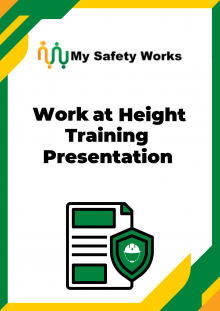
- Work at Height Training Presentation
This work at height training presentation:
- Can help you educate employees on the dangers of working at height.
- Can assist you train workers on height safety, so that they can carry out the work safely.
- Can assist you to educate workers to understand that they have a legal obligation to take reasonable care of their own safety and that they do not adversely affect the safety of other persons when working at height.
What is Working at Heights?

Work at heights is where there is a risk to a worker’s health and safety associated with a fall from one level to another that is reasonably likely to cause injury to the person or any other person and could include:
- In or on an elevated workplace from which a person could fall.
- In the vicinity of an opening through which a person could fall.
- In the vicinity of an edge over which a person could fall.
- On a surface through which a person could fall.
- In any other place from which a person could fall.
Note: Notwithstanding the above, any task that involves the risk of a fall equal to, or greater than two (2) metres should be treated as working at height irrespective of circumstances.
About this Work at Height Training Presentation
This work at heights training presentation includes the key systematic requirements of height safety inclusive of:
- The personnel assigned to work at height having the necessary training to carry out the work safely.
- Using the hierarchy of controls when considering methods for safe work at height.
- The strict compliance to all applicable codes of practice, Australian standards and legislative obligations.
- The development of a rescue plan with all of the required equipment and competent personnel available to enact the rescue plan.
Personnel assigned to work at height, where there is the potential of injury by falling from one level to another or requiring the use of fall protection equipment, must have completed training to enable them to carry out the work safely.
Note: As applicable WHS legislation, all workers must be able to provide evidence of work at height training before the commencement of tasks.
Why Subscribe and Download this Work at Height Training Presentation?
- This work at height presentation can help you educate employees on the dangers of working at height.
- Can assist you to educate workers that they have a duty to take reasonable care for their own safety and that they do not adversely affect the safety of other persons when working at height.
With this work at height training presentation, you will be able to:
- Very easily edit and customize the template to create your own work at height training presentation.
- Apply your own style, format and brand to the training presentation.
- Use it in any industry or sector regardless of size or type of organization.
Availability and Use of this Work at Height Training Presentation
- This work at height training presentation is accessible to you right now by clicking the ‘Become a Member Now’ button.
- The presentation will be delivered to you in fully editable Microsoft PowerPoint format for immediate and full use in your business.
- There are no membership auto-renewals, contracts or ongoing costs.

If you can find HSEQ documents that are of better value than what your Membership offers, we will REFUND YOU double the cost of your membership.
You may also need:.
- Work at Height Checklist
- Work at Height Procedure
- Workin g at Heights Permit
- Work at Height Assessment
- SWMS for Working at Heights
- Working at Height Rescue Plan
- Working at Heights Rescue Flowchart
- Behaviour Checklist for Working at Height
- Verification of Competency for Working at Height
- Virtual HSEQ Manager
- FAQ’S
- AS/NZS ISO 45001 Training Presentation
- AS/NZS ISO 45001 Audit Checklist
- AS/NZS ISO 45001 Responsibility Matrix
- AS/NZS ISO 45001 OHS Implementation Plan
- AS/NZS ISO 45001 OHS Implementation Register
- AS/NZS ISO 45001 OHS Training Program
- Safety Sign Package
- Safety Poster Package
- Workplace Safety Assessment
- Work Health and Safety Management Plan Assessment
- Safe Work Method Statement Checklist
- New Employee Orientation Checklist
- Induction Register
- Strengths Weaknesses Opportunities and Threats Analysis
- Hearing Conservation Plan
- Hearing Conservation Plan Checklist
- Workplace Noise Training Presentation
- Angle Grinder Safe Work Procedure
- Working at Heights Permit
- Working at Height Rescue Equipment List
- Ladder Inspection Checklist
- Emergency Evacuation Report
- Emergency Management Checklist
- Emergency Services Contact Form
- Dangerous Goods Segregation Chart
- Remote Work and Working Alone Checklist
- Apprentice, New and Young Worker Safety Checklist
- Safety Checklist for Installing a Solar System
- Workplace Housekeeping Checklist
- Health and Safety Budget Template
- WHS Issue Resolution Flowchart
- Injury Management Process Flowchart
- Risk Management Process Flowchart
- Workplace Near Miss Report
- Safety Improvement Request
- Fatigue Management Toolbox Talk
- Noise Management Toolbox Talk
- Hazardous Chemicals Toolbox Talk
- Personal Protective Equipment Toolbox Talk
- Occupational Health and Hygiene Toolbox Talk
- Mobile Phone Use in the Workplace Toolbox Talk
- Using Tools Safely Toolbox Talk
- Manual Handling Safety Toolbox Talk
- Work Permit Systems Toolbox Talk
- Mobile Plant Safety Toolbox Talk
- Smoking in the Workplace Rules Toolbox Talk
- Isolation and Energy Control Toolbox Talk
- Welding Machine Inspection Checklist
- Excavator Inspection Checklist
- Pressure Test Checklist
- Machinery Safety Checklist
- Electrical Safety Checklist
- Reflective Safety Tape Colours
- Health and Safety Rules
- Working in Hot Conditions
- AS/NZS ISO 14001 Training Presentation
- AS/NZS ISO 14001 Audit Checklist
- AS/NZS ISO 14001 Environmental Training Program
- AS/NZS ISO 14001 Environmental Implementation Plan
- AS/NZS ISO 14001 Environmental Implementation Register
- AS/NZS ISO 14001 Responsibility Matrix
- Environmental Aspects and Impact Controls
- Sustainability Checklist
- Life Cycle Analysis
- Waste Management Checklist
- Environmental Incident Response Procedure
- Infrastructure Responsibilities Register
- Water Sample Report
- AS/NZS ISO 9001 Training Presentation
- AS/NZS ISO 9001 Audit Checklist
- AS/NZS ISO 9001 Quality Implementation Plan
- AS/NZS ISO 9001 Quality Implementation Register
- AS/NZS ISO 9001 Quality Training Program
- AS/NZS ISO 9001 Responsibility Matrix
- Contractor Quality Checklist
- AS/NZS ISO Integrated Management System Training Presentation
- Project Planning Checklist
- Project Lessons Learnt
- Reward and Recognition Nomination Form
- Worker Capability Statement
- Company Vehicle Use Agreement Form
- Acknowledgement of Policies and Procedures Form
- Site Shutdown Checklist
- Letter of Appointment for a Crane Operator
- Material Procurement Schedule

Working at Height
Jul 20, 2014
2.38k likes | 4.09k Views
Working at Height. Working at Height. Working at Height. Working at height greater than 2m(GB) Working off-the-ground . Working at Height. Working at Height. Examples of working at height Man-baskets. Ladders Incomplete structural steel Elevated piping or pipe supports
Share Presentation
- connecting device
- automatic rope
- potential hazards
- traditional fall protection
- manual rope

Presentation Transcript
Working at Height MDPI/GOODWILL OIL AND GAS TRAINING
Working at Height Working at Height • Working at height greater than 2m(GB) • Working off-the-ground
Working at Height Working at Height • Examples of working at height • Man-baskets. • Ladders • Incomplete structural steel • Elevated piping or pipe supports • Tank roof without standard guardrail system. • Unqualified scaffolds • Air Spider • Rope access system
Working at Height Avoiding off-the-ground accidents is easy by: 1.Set up the proper precautions; 2. Follow all safe work practices; 3. Use the fall protection equipment properly MDPI/GOODWILL OIL AND GAS TRAINING
Set up the proper precautions • Safety must be first and foremost in your thoughts • Scan work areas for potential hazards and develop a plan to follow based on the hazards. Example: light, overboard, possible falling level
Set up the proper precautions • Always be noticed on the weather altering - High Wind - Rain/Storm - Lighting - Sleet/Snow and any severe weather - Heavy brume/fog • Be aware of the physical situation of the person working at height. - Alcohol influence, take medicine, sick and natural constitution) MDPI/GOODWILL OIL AND GAS TRAINING
Set up the proper precautions • Working in lift buckets or other portable platforms requires extra protection. - Always secure yourself with tie-off using a harness • Workers are more vulnerable when “on the move” above ground. - Always watch your step. MDPI/GOODWILL OIL AND GAS TRAINING
Set up the proper precautions • Be aware of any trip hazards (remove them if possible) • Look for posted warning signs. • Obey restrictions regarding authorized and protected areas
Follow all safe work practices • Fall protection systems are required for performing work at heights of 2 meters or above away from the level where the falling is possible. • Fall arrest equipment will limit free fall to 2 meter or less • Anchorage in fall arresting system should be secured above the worker - not below or to the side.
Follow all safe work practices • A visual inspection of the fall protection equipment and system is completed and any equipment that is damaged or has been activated is taken out of service • Person are competent to perform the work MDPI/GOODWILL OIL AND GAS TRAINING
Use the fall protection equipment properly Fall Protection • Fall protection includes fall restraint and fall arrest • Fall restraint: Do not allow employee working at height to fall. • Fall arrest: Allow employee working at height to fall, but arrest it to eliminate injure or save life. MDPI/GOODWILL OIL AND GAS TRAINING
Use the fall protection equipment properly Fall Protection priority or hierarchy • Avoiding working at height • Fall restraint • Fall arrest system. A full body harness and a lanyard may no longer be the automatic choice for maximum safety. It is far better to eliminate the hazard and make sure that a fall doesn’t occur, rather than to arrest a fall after it has occurred. MDPI/GOODWILL OIL AND GAS TRAINING
Use the fall protection equipment properly Fall restraint equipment Traditional fall protection • Guardrail / Handrail • Some of them fitted with screens and toe boards • Be able to support 200 pounds of top-down pressure • Stand 39 – 45 inches above walking surfaces • Include a mid-rail • Be inspected during regular intervals
Use the fall protection equipment properly Fall restraint equipment Traditional fall protection (Continue) • Ladder cage • Cover • Safety net Travel Restriction • Anchor • Lifeline/Lanyard • Safety belt or full body harness
Use the fall protection equipment properly Fall arrest equipment Comprise of three components which work together • Body support • Connecting device • Anchor system
Use the fall protection equipment properly Fall arrest system Body support • Full body harness Distributes weight evenly over the body. • Meet related standards, certificate • T2XB, T3XB and T4XB in GB6095 can be used • How to wear ?
Use the fall protection equipment properly Fall arrest system Body support Hold the back D-ring and shake it until the straps fall into place.
Use the fall protection equipment properly Fall arrest system Body support Slip straps over the shoulders so that the D-ring is in the middle of the upper back.
Use the fall protection equipment properly Fall arrest system Body support Connect the leg straps by pulling buckles between the legs and securing them to the other ends of the straps.
Use the fall protection equipment properly Fall arrest system Body support Firmly and securely tighten buckles, (but not so tight as to restrict movement).
Use the fall protection equipment properly Fall arrest system Body support Buckle the waist strap.
Use the fall protection equipment properly Fall arrest system Connecting device • Double latch self-lock snap hook Inward opening • Double latch self-lock carabiner Shackle also can be used
Use the fall protection equipment properly Fall arrest system Connecting device • D-ring, O-ring • Lanyard (with or without shock absorber)
Use the fall protection equipment properly Fall arrest system Connecting device • Self retracting lifelines (SRL) • Lifeline not come in contact with any sharp edges • Minimize swing fall by anchoring directly above you • Should be connected directly to the dorsal “D” ring • Never attach a lanyard to an SRL and never anchor the SRL at foot level
Use the fall protection equipment properly Fall arrest system Rope grabs • Automatic rope grab • Manual rope grab • Match to rope size • Go on the right way • Pull down for test • Park above to minimize free fall distance
Use the fall protection equipment properly Anchor system Components: Anchorage + Anchorage connector Anchorage: Structure generally Anchorage connector: Web, beam clamp MDPI/GOODWILL OIL AND GAS TRAINING
Use the fall protection equipment properly Anchor system Engineered System (preferred) Improvised System (guess the anchorage strength) MDPI/GOODWILL OIL AND GAS TRAINING
Use the fall protection equipment properly Anchor system Select or build an anchorage, the following should be considered: 1) Work area 2) Ease of rescue 3) Shock absorption 4) Swing fall hazards 5) Sharp edges 6) Strength 7) Something structural Anything can’t be as anchorage for fall arrest?
Use the fall protection equipment properly Horizontal lifeline • For fall restraint and fall arrest • Provide mobility for job • Strength • Build
Use the fall protection equipment properly Vertical lifeline • For fall arrest • Provide mobility for job • Strength • Build
Use the fall protection equipment properly Inspection prior to use Fall restraint: Traditional fall protection Travel restriction Fall arrest: Full body harness Connecting device (Hardware, lanyard, SRL) Anchorage Horizontal or vertical lifelines
Use the fall protection equipment properly Storage • Not in bright or UV light • Cool dry • In order • Protect from sea water
Special working at height Rope access system International Rope Access Trade Association (IRATA) Air spider Operation manual
Rescue and escape system A fall arrest system is not complete unless the user of the system has accounted for a means of rescue or escape
Knowledge related to safety of working at height • Ladder safety • Scaffolding • Slips, trips and falls • Rope access • Air spider
- More by User

Working at Height. … the good old days …. Working at height has always been a hazardous business …. Gravity had much the same strength in the 1930’s as it has now … Then, as now, limbs were just as prone to break in a fall vital organs to tear and crush … skulls - to crack …
548 views • 13 slides

Working at height has always been a hazardous business …
Working at Heights. … the good old days …. Working at height has always been a hazardous business …. Gravity had much the same strength in the 1930’s as it has now …. I was surprised to learn that only seven people died while constructing the Empire State Building and eleven at the Golden
692 views • 12 slides
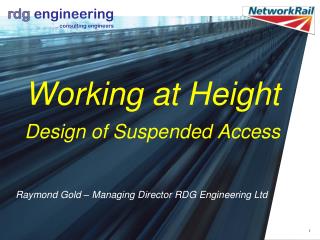
Working at Height Design of Suspended Access
Working at Height Design of Suspended Access. Raymond Gold – Managing Director RDG Engineering Ltd. The design of an access/protection system has the overarching commitment to provide protection for both the operatives above and employees, public and infrastructure alike below. .
640 views • 47 slides
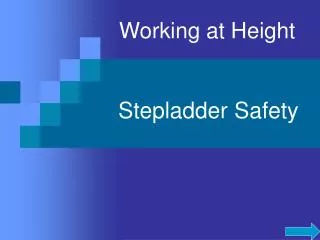
Working at Height. Stepladder Safety. Falls from height – a serious problem. Main cause of workplace fatalities 53 died 3800 serious injuries 60% falls from below head height From ladders/stepladders 14 died 1200 serious injuries HSE data 2004/5. Before you start . STOP!
548 views • 22 slides

SAFE WORKING AT HEIGHT
701 views • 29 slides

Working at Height - Ladders
Working at Height - Ladders. Legislation . The Work at Height Regulations 2005 Ladders can be used for short duration work when: the risk assessment shows that there is insufficient justification for using equipment which offers a higher level of fall protection such as a platform;
280 views • 9 slides
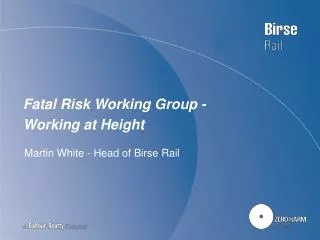
Fatal Risk Working Group - Working at Height
Fatal Risk Working Group - Working at Height. Martin White - Head of Birse Rail. Introduction. Birse are now part of Balfour Beatty Rail Now part of Projects business unit Beginning of a journey in BB Rail Part of Zero Harm in Balfour Beatty Zero AFR for most of last year The Golden Rules.
576 views • 39 slides

Working at Height. … the good old days …. Working at height has always been a hazardous business …. Gravity had much the same strength in the 1930’s as it has now …. Then, as now, limbs were just as prone to break in a fall. vital organs to tear and crush …. skulls - to crack ….
617 views • 13 slides

WORKING AT HEIGHT SAFELY IN GENERAL REPAIR & MAINTENANCE
WORKING AT HEIGHT SAFELY IN GENERAL REPAIR & MAINTENANCE Andy Weaver SGB Group Product Marketing Manager. WORK AT HEIGHT The SGB View. Work at Height. The new Regulations : Represent the most significant changes affecting work at height since 1966
575 views • 32 slides
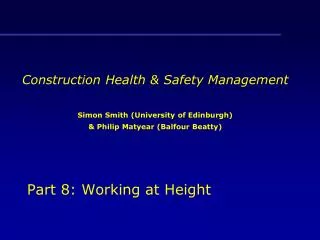
Part 8: Working at Height
Part 8: Working at Height. Construction Health & Safety Management Simon Smith (University of Edinburgh) & Philip Matyear (Balfour Beatty). Overview. General Legislation HSE view Working at height examples Hierarchy of control Eliminate work at height
700 views • 33 slides

WORKING AT HEIGHT MOHSG 30 March 2005
WORKING AT HEIGHT MOHSG 30 March 2005. Chris Gallagher HSE Safety Unit. Overview. What is the problem? What is HSE doing? What should you do? New Work At Height Regulations Practical examples. What is the problem?. Fatal accidents falls from height 2003/04
1.06k views • 69 slides
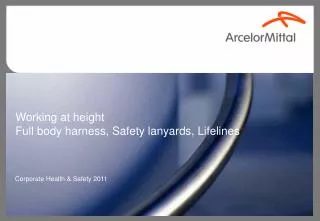
Working at height Full body harness, Safety lanyards, Lifelines
Working at height Full body harness, Safety lanyards, Lifelines. Corporate Health & Safety 2011. Summary. Introduction Main causes of accidents Individual protection Questions. Introduction. February 2010 Fatality Work: removal snow works on the roof of the Rail Finishing Bay
4.05k views • 49 slides

Working at Height. Phill Leonard Health and Safety Executive. Fall from height statistics. 2008/09 35 Fatal accidents Over 4500 major injuries Over 7000 3+ day injuries 09/10 39 Fatal accidents. Work at Height Regulations 2005. Hierarchy: Avoid > Prevent > Minimise
793 views • 19 slides
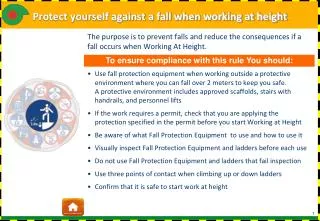
Protect yourself against a fall when working at height
Protect yourself against a fall when working at height. The purpose is to prevent falls and reduce the consequences if a fall occurs when Working At Height.
324 views • 6 slides

Working at height Walking/ working on a roof
Working at height Walking/ working on a roof. Corporate Health & Safety 2011. Summary. Introduction Return of experiences Main causes of accident General rules Walking/ working on a flat roof Working on an inclined roof Practical exercice. Introduction.
399 views • 19 slides

Meeting the Working at Height Challenge – NDS
Meeting the Working at Height Challenge – NDS. Caroline Meek and Dave Turton. Hard facts. Falls from height remain the single biggest cause of workplace deaths and one of the main causes of major injury (HSE)
365 views • 19 slides

Working at height Working around/in pits and holes
Working at height Working around/in pits and holes. Corporate Health & Safety 2011. Contents. Introduction Main causes of accidents HIRA - Solutions Questions. Introduction. December 2010 Fatality Work: removal of a hanging charge (cleaning of bunker from batch mixture),
360 views • 11 slides

working at height mississauga | working at height training mississauga
Canadian Forklift Safety Group provides Forklift Training & license, Working At Heights Training and Fall Safety Training in Mississauga and Brampton.
186 views • 7 slides
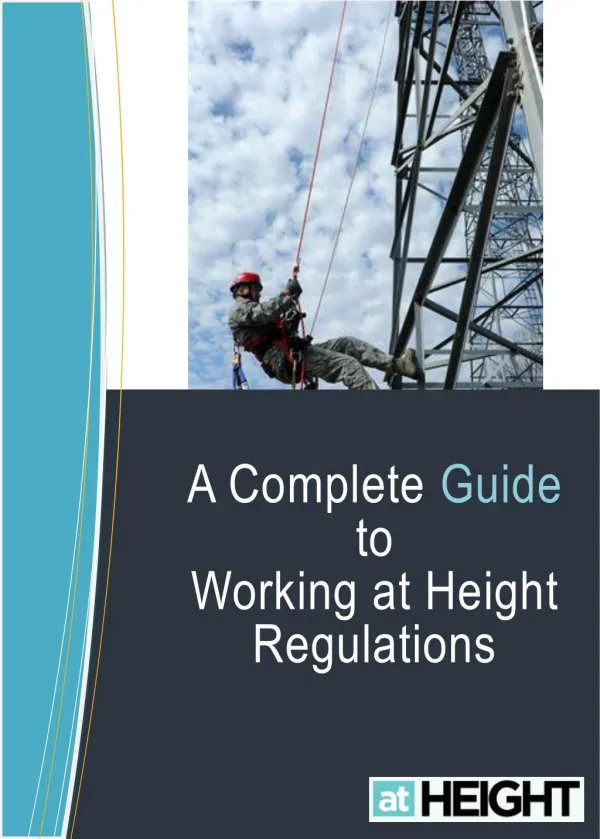
A Complete Guide to Working at Height Regulations by At-Height
"The Work at Height Regulations 2005 enlists a set of specific guidelines that aim to avert death and injury caused due to a fall from height. These guidelines have been setup specifically for the employers who either employ people to work at height or control the same. <br><br>It is the utmost responsibility of the employers and those managing the manpower to make sure that any work that is being carried out at height is well-planned, supervised and executed by competent people. This also includes making use of the right type of equipment for working at height. <br><br>This guide enlists complete regulations for companies and people involved in working at height."
241 views • 6 slides

Safety Tips for Working at Height
Working and performing tasks at height is part of day to day requirements in work and leisure. It is therefore essential to ensure that those performing activity at height stay safe and protected from all potential risks to safety and health. We supply products that ensure every worker deployed at height comes homes safely. https://at-height.co.uk/fall-protection.html
1.02k views • 16 slides

88 views • 6 slides

493 views • 13 slides

- Most Popular
- Explore all categories
safe work at heights
Safe work at heights
Upload: rance
Post on 17-Jan-2016
management of fall hazards
Administrative controls, risk of falls, higher controls, higher level controls, level hierarchy of controls, risk assessment process.
Embed Size (px): 344 x 292 429 x 357 514 x 422 599 x 487
DESCRIPTION

• Are a major cause of work related fatalities and serious injuries in Australia.
• Within the Department, falls from height accounts for approximately 7% of compensable injuries.
• There are specific regulations relating to the management of fall hazards.

Definitions
• Fall - a fall by a person from one level to another.
• Falling object – an unsecured object (e.g. a spanner) falling from height can cause serious injuries if controls are not implemented to eliminate or minimise the associated risks.
• Fall hazard means a circumstance that exposes a worker in a workplace to a risk of a fall that is reasonably likely to cause injury to the worker or other person.

Legislation
• Work Health and Safety Act 2011
• Work Health and Safety Regulation 2011 (Part 4.4 Falls)
• Code of Practice – Managing the risk of falls in workplaces 2011

Key legislative elements
• Legislation applies to falls from one level to another i.e. from any height.
• A new five-level hierarchy of controls specifically for work at heights has replaced the generic hierarchy of controls (elimination, substitution, engineering, PPE, administrative controls).
• Ladders and administrative controls are now only to be used as a last resort when it is not reasonably practicable to use higher level controls.
• If ladders or administrative controls are used for fall hazards over 2 metres, a record must be made of the control to be used and a reason why higher controls were not reasonably practicable

Department resources to assist with compliance
• Working at Heights DETE Guideline
• Working at Heights Inspection Tool
• Risk Assessment Template for working at height
• SWMS Template for work where risk of fall is >2m
• Generic heights equipment SOPs
• Regional Senior Health and Safety Consultants
There is a prohibition on Department staff, students and volunteers being on, or working on roofs at all state
school facilities

Examples of incidents in the Department
• Fell when standing on a fence and cutting down a tree• Hammer fell from storage rack, striking person’s foot• Fell off stage• Cleaning fans on a ladder, stepped back and fell• Fell off roof cleaning gutters
• Standing on ladder reaching to spray wasp nest
and fell on iron gate
• Fell off roof when doing roof maintenance
• Standing on desk winding a high window, fell backwards
• Overbalanced while standing on chair to write on the blackboard
• Hanging artwork in room, fell backwards off a desk

What is a fall hazard?
A fall hazard is an anything that exposes a worker or another person to the risk of a fall that may injure them.

Common Fall Hazards in the Department
• Retrieving items from the roofs (e.g. balls, shoes)• Cleaning roof gutters• Cleaning high windows, fans• Changing light bulbs• Opening/closing out of reach windows• Hanging classroom displays• Accessing items on high shelving

Common Fall Hazards cont…
• Easy access to roofs (poor design)• Working on roofs • Using ladders• Working on fragile, slippery or sloping surfaces

What is a risk assessment?
A risk assessment process aims to remove fall hazards or reduce the level of their risk by adding precautions to keep you and others safe.
The process is:
•Identify fall hazards.•Evaluate the risk associated with any hazards.•Determine appropriate ways to eliminate or control the hazard.
By controlling the risks, you have created a safer work environment for you and others.

Control Measures for Fall Risks
• Follow the Five Level Hierarchy of Controls…….(Level 1 is safest, Level 5 the least effective).
• Work your way down the hierarchy when deciding on control measures. Only move to a lower level where it is not “reasonably practicable” to use a higher order control.
• Allocate budget and resources to ensure that falling hazards are eliminated or minimised.

Five Level Hierarchy of Controls
Level 1: Perform the work on the ground or on a solid construction.
Level 2: Use a passive fall prevention device
e.g. cherry picker, install guard rails, mobile scaffold.
Level 3: Use a work positioning system
e.g. a travel restraint system
Level 4: Use a fall arrest system
Level 5: Use a ladder or administrative control

Level 1: Perform Work from Ground or Solid Construction
Ask yourself:
Do I really need top work at height? If you don’t need to go up, then don’t!
• Use a long handled device to clean high windows, gutters, change signboards etc.
• Use a contractor to complete work

Level 2: Passive Fall Prevention Device
Passive devices are used for temporary work at heights and are designed to prevent workers from falling.
Once in place they do not require any further adjustment by workers using the device.

Level 3: Work Positioning System
These systems involve the use of equipment that allows a person to work supported in a harness under tension in such a way that a fall is prevented.
Example • A skilled contractor uses a travel restraint
system when performing work on a roof

Level 4: Fall Arrest System
Level 4 systems minimise injury once a fall has occurred rather than avoiding it in the first place. They should NOT be used unless:
• the operator is trained, has a high level of skill, and undertakes ongoing training.
• systems undergo regular inspection.
• there is at least one other competent person present to perform a rescue in case of a fall.

Level 5: Use a Ladder or Administrative Controls
These options may only be considered if it is not reasonably practicable to use any of the higher order controls.
Ladders should only be used:
•as a work platform for light work of short duration. •if they are manufactured for industrial use and have a load rating of ≥120kg.
Many falls take place when people are working from ladders.

Administrative controls are also Level 5 controls.
These are systems of work or work procedures that help to reduce the exposure of employees to fall hazards where it is not reasonably practicable to use higher level controls.
They may also be used to support other control measures that are put in place.

• Employees should be trained in safe operations before attempting to do any activities involving fall hazards.
• Training is to be commensurate with the level of risk and types of controls to be used.
• Some plant, machinery and activities require specific training and licencing. Eg: erection of scaffold.

Department risk management processes
Work at Heights Task Required Actions
Any activity that involves being on, or working on any roof at any state school facility.
Do not proceed. Being on, or working on any roof at any state school facility is prohibited for all school staff, students and visitors.
Activities where you already know the risks and know how to control them.
Review and adhere to an existing risk assessment or Safe Work Method Statement (SWMS) or Safe Operating Procedure (SOP).
A new activity or a significant change to an existing activity that involves a fall hazard of less than 2 metres.
Complete and adhere to a risk assessment.Apply the hierarchy of control starting at level 1 (elimination). If ladders are used, you must state why you are not using a higher level control.
Tasks that involve fall hazards of 2 metres or more above the ground (measured from the feet).
Tasks that involve fall hazards of 1.5 metres below ground level (measured from the feet).
Complete and adhere to a Safe Work Method Statement (SWMS) Develop and adhere to any SOPs relevant to the safe completion of the task e.g. for plant and equipment, pre-start procedures.

Common example – gutter cleaning
• Identify and remove tree branches that are located too close to buildings and result in leaves etc. blocking gutters.
• Can you install good quality gutter guard to eliminate the need to clean gutters?

• Use a long handled device to retrieve balls/bags/shoes on the roof or out of reach items on high shelves
Common example – high shelves

• Can high windows be opened using a long handled tool or device?
• Avoid opening high windows if they are difficult to access
• Can you use a step platform ladder instead of a step ladder?
Common example – high windows/lights

Key Messages• Eliminate the need to perform tasks that expose
persons to a risk of falling
• The new Five Level Hierarchy of Controls is to be followed to decide upon control measures
• Stay off ladders if at all possible – they should be used as a last resort
• Under no circumstances should chairs, tables, shelves etc. be used to gain access to heights.
• Only persons who have been trained and who are deemed to be competent should perform activities that involve fall hazards.
• Allocate budget and resources to ensure that fall hazards are eliminated or minimised
Safe Working At Heights Guideline.pdf
Excavator Safe Work
Work Safe Work Smart
SAFE WORK PRACTICES
Safe Working at Heights
Best of Safe Working at Heights Guide 1321
WSH (Work at Heights) Regulations 2013
Safe work procedure1
Safe Working At Heights - KLIA - Malaysia Airports Holdings … 5 - safe... · · 2018-02-12Safe Working At Heights ... Working at a height. Where any person is required to work
Safe Work Australia
Personal Protective Equipment for Work at Heights
Safe For Work?
Safety on construction work at heights
SAFE AT HOME, SAFE AT WORK?
WORKING SAFELY AT HEIGHTS FLOWCHART · WORKING SAFELY AT HEIGHTS FLOWCHART Carry out the podium step risk checker. You must work safely using a podium step. A safe method of work
Parnassus Heights Campus Security Work Group Recommendations
SAFE DRIVING - SAFE Work Manitoba Related Documents... · With the SAFE Driving at Work Plan, SAFE Work Manitoba commits to working with Manitoba employers to address and prevent
safe Working At Heights: Guide - Risklogic … · WorkCover. Watching out for you. SAFE WORKING AT HEIGHTS GUIDE 2006
Work safely at heights in brisbane
Work smart, work safe
Think Safe Work Safe Home Safe
WORK SAFE. WORK SMART. DISPOSABLE GLOVES
Safe working on heights & Rope Access - News Camp Safety 2010
Safe working at heights from work platforms in the meat industry
SAFE WORK ENVIRONMENTAL METHOD STATEMENT · SAFE WORK ENVIRONMENTAL METHOD STATEMENT ‘ Safe Work and Environmental Method Statement’. Contractor: Premium Scaffold Solutions Pty
Code of Practise to Work Heights
R. Litz and Sons Safe Work Procedures Safe Work Practices ... · PDF fileR. Litz and Sons Safe Work Procedures & Safe Work Practices Manual
WORK SAFELY AT HEIGHTS - Master Builders WA · 2018-05-21 · WORK SAFELY AT HEIGHTS . RIIWHS204D Work safely at heights. Eligible for CTF subsidy. MBA Member Non-member . Not eligible
SAFE WORKING AT HEIGHTS - Transtegic...This course provides participants with the knowledge and skills to work safely at heights in accordance with relevant legislation, Codes of Practice
WORK HEALTH AND SAFETY RISK ASSESSMENT FORM · Safe Work Australia online hub ... Safe Work Australia Workplace Checklist Safe Work Australia Physical Distancing Safe Work Australia
SAFE STREETS PARK HEIGHTS
FP Guidance_Aircraft_Maintenance · Web viewThis guide provides tools, criteria, and safe work practices to identify, assess, abate, and control fall hazards when working at heights
R. Litz and Sons Safe Work Procedures Safe Work Practices ...litzcranes.ca/docs/litz_safe_work_procedures_2011.pdf · Safe Work Procedures & Safe Work Practices Manual . ... Hollow
SAFE WORK METHOD STATEMENT - Sydney Tree … 1 of 12 MANUAL HANDLING CHAINSAWS FALLING OBJECTS NOISE WORK AT HEIGHTS SAFE WORK METHOD STATEMENT SWMS No.: SWMS -TF 01 WORK ACTIVITY
Heights - Working at SWMS No.: SAFE WORK METHOD … · This SWMS covers the risk management processes and procedures that need to be followed when preparing to work at height

IMAGES
VIDEO
COMMENTS
Safe work at heights. A fall hazard is an anything that exposes a worker or another person to the risk of a fall that may injure them. 13 slides. Working at Height in the Good Old Days. Gravity had much the same strength in the 1930's as it has now. Then, as now, limbs were just as prone to break in a fall. 17 slides.
Proper training is the cornerstone of work-at-height safety. All workers must be trained in the safe use of equipment, hazard recognition, and emergency procedures. ... Downloadable PPT for Work at Height Safety. To aid in educating your team or colleagues on work-at-height safety, we offer a downloadable PowerPoint presentation (PPT). This ...
A pre-work HIRA must always be carried out before working at heights This pre-work HIRA must take the following into account: Tools and Equipment that will be required State the measures to prevent tools & equipment from falling from heights Any other securing methods determined as needed for this purpose. 10.
Presentation working at height - Download as a PDF or view online for free. Presentation working at height - Download as a PDF or view online for free. Submit Search. Upload. ... Work at Height Training 3146- 23 Jan 2022. Work at Height Training 3146- 23 Jan 2022 Syed Neyaz Ahmad ...
What is work at height? • Work at height is work in any place, including a place above or below ground level, where a person could be injured if they fell from that place. Access and egress to a place of work can also be work at height. • All work above 1.8 m is considered as Working at Height. 4.
Is part of. Training package in occupational safety and health for the construction industry - Toolbox briefings. Instructional material | 01 June 2010. Download: pdf - 0.1 MB. Tags: construction industry, occupational safety and health.
When conducting working at heights safety training, it's essential to tackle a comprehensive range of topics, including the following: Risk Assessment: Identifying potential risks associated with working at heights. Assessing risks and determining appropriate control measures.
Ideal for training new staff and as a refresher. The perfect resource to assist classroom delivery. Excellent value for money. £132.00 excl. VAT. £158.40 inc. VAT. Product Details. Injuries caused from working at height make up a significant percentage of workplace injuries and are the largest cause of workplace fatalities across the world ...
Training, competence and fitness Trained Work at height should only be conducted by those who have attendedall the relevant training. Competent Any persons working at height must have beenassessed as competent and authorised to do so. Fit for work They must also be well rested, medically fit and free from the effects of drugs or alcohol.
Working at height can be very dangerous and there is a lot of detailed knowledge to be learned to preserve OS&H for all those involved. So, this module will be taught in the following stages: A presentation by the tutor which summarises the main parts of the subject. Simulated 'tool-box briefings in which your tutor and some colleagues will ...
This paper presents a research that was carried out through case studies on 14 sites where personnel were working at a height. The study indicates that 65% of the respondents did not have a safety management system in force while the rest had a reasonably sound system and complied with it.
This presentation comes with a quick assessment to check understanding at the end of the briefing, and an answer sheet for marking. Staff briefing: working at height assessment with answers DOCX, 213.7 KB. Download. Staff briefing: working at height assessment no answers DOCX, 196.4 KB. Download.
1. Work at Height. 2. Work at height • Fall from height: (i) Material Fall (ii) Fall of person • 56% of accidents are reported due to fall from height and highest percentage of accidents in construction. • It is most common activities in construction. • Negligence and leniency are one of major causes of accidents.
WORKING AT HEIGHTS SAFETY TRAINING 1 WORKING AT HEIGHTS SAFETY. ... Log in Join. Work Heights Safety Training.ppt - WORKING AT HEIGHTS... Doc Preview. Pages 93. Identified Q&As 5. Total views 52. National Institute of Fire Engineering & Safety Management. SE. SE 214. er13533. 1/22/2022. View full document.
Working at Heights Presentation Contents. 15.21k views • 21 slides. ... C6 Crane Operator Training Brisbane C6 Crane Training Brisbane Work Safely At Heights Training Heights And Safety Training Ewp Licence Under 11m Yellow Card Scissor Lift Boom Lift Operator Course The regulations provide for planning and accident mitigation, training of ...
This course covers all relevant information about health and safety standards, general working at heights applications, permits, permit process, hazards and associated risks, preparation for heights work, roles and responsibilities, PPE, ladders, scaffolds, equipment inspection and use and more. Training consists of theory presentation ...
This work at heights training presentation includes the key systematic requirements of height safety inclusive of: The personnel assigned to work at height having the necessary training to carry out the work safely. Using the hierarchy of controls when considering methods for safe work at height. The strict compliance to all applicable codes of ...
Working at Heights Presentation Contents. Slideshow 4266626 by min. Browse. Recent Presentations; Recent Stories; Content Topics; ... C6 Crane Operator Training Brisbane C6 Crane Training Brisbane Work Safely At Heights Training Heights And Safety Training Ewp Licence Under 11m Yellow Card Scissor Lift Boom Lift Operator Course The regulations ...
working at height. Oct 8, 2019 • Download as PPTX, PDF •. 6 likes • 3,868 views. J. JYOTHISHKT. hazard precautions and rescue methods while working at height. Healthcare. 1 of 44.
During download, if you can't get a presentation, the file might be deleted by the publisher. E N D . ... Working At Heights Training and Fall Safety Training in Mississauga and Brampton. 186 views • 7 slides. A Complete Guide to Working at Height Regulations by At-Height
14. 14 Examples of working at height • Using working platforms such as scaffolds, tower. • Scaffolds, cherry pickers, scissor lifts and podium steps. • Work on a roof, piece of plant or equipment. • Using ladders or stepladders. 15.
DESCRIPTION. Safe work at heights. Falls. Are a major cause of work related fatalities and serious injuries in Australia. Within the Department, falls from height accounts for approximately 7% of compensable injuries. There are specific regulations relating to the management of fall hazards. . - PowerPoint PPT Presentation.
1 of 25. Download now. 1. Safe work at heights. 2. Falls • Are a major cause of work related fatalities and serious injuries in Australia. • Within the department, falls from height accounts for approximately 7% of compensable injuries. • There are specific regulations relating to the management of fall hazards. 3.